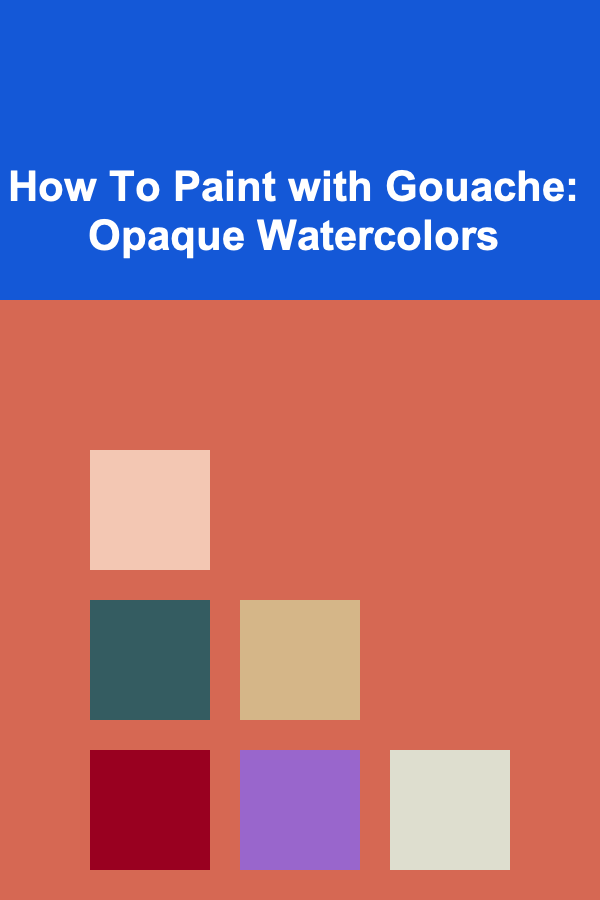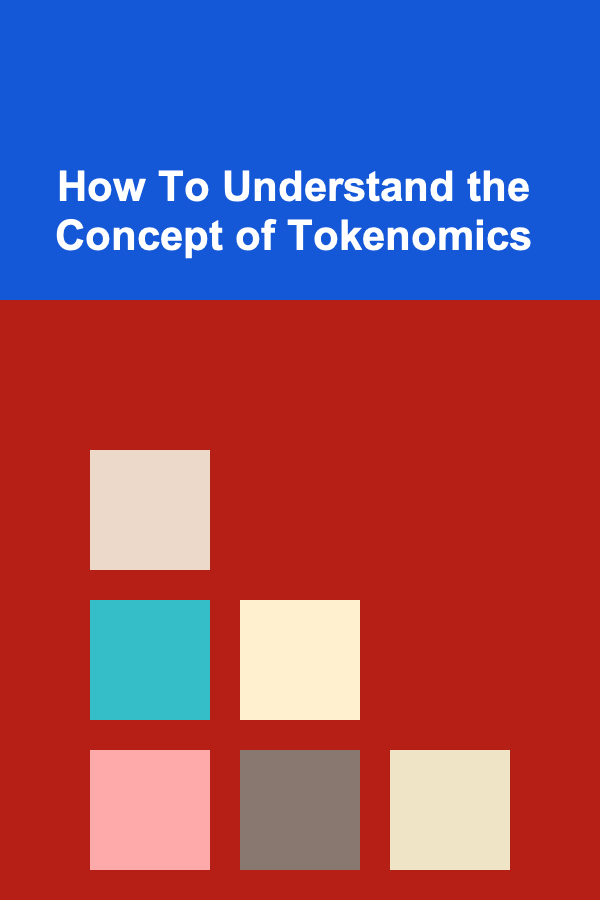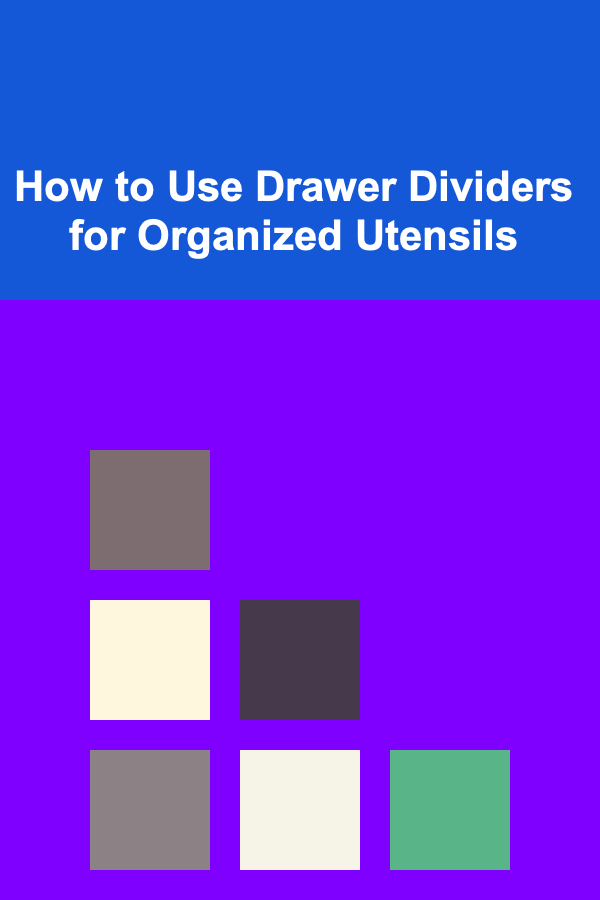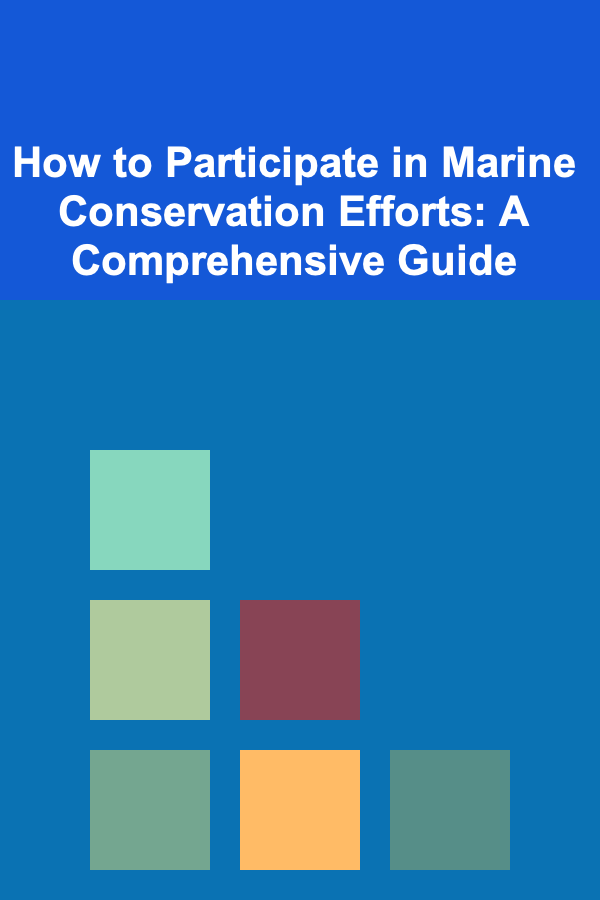
How To Paint with Gouache: Opaque Watercolors
ebook include PDF & Audio bundle (Micro Guide)
$12.99$5.99
Limited Time Offer! Order within the next:

Gouache is a type of water-based paint that has gained popularity among artists for its versatility and rich, opaque finish. Often compared to watercolor due to its similar application method, gouache stands apart with its ability to produce solid, vibrant colors that can be layered and manipulated in unique ways. Whether you're a beginner or an experienced painter, gouache can open up a new world of possibilities for your artwork. In this comprehensive guide, we will explore how to paint with gouache, its benefits, and techniques to get the most out of this medium.
What Is Gouache?
Gouache is a water-based paint that is characterized by its opaque, matte finish. The primary difference between gouache and watercolor lies in the amount of pigment and the presence of chalk or other white fillers. Watercolor paint is typically transparent, whereas gouache contains more pigment and additional white filler, making it more opaque. This opacity allows gouache to cover darker colors and provide a richer, more solid finish than watercolor.
Gouache is a versatile medium that can be used for various styles of painting, including illustration, fine art, and design. It is favored by many artists because of its ability to be reactivated with water and the vibrant, opaque colors it produces.
Key Characteristics of Gouache
Before diving into techniques, it's important to understand the key features that set gouache apart from other mediums:
- Opacity: Unlike watercolor, gouache is opaque, meaning it covers up underlying layers of paint more easily. This allows you to build up layers and correct mistakes, making it a forgiving medium for beginners and advanced artists alike.
- Matte Finish: Gouache dries to a matte finish, which provides a unique aesthetic. The absence of gloss can make gouache paintings appear softer and more muted than those created with oils or acrylics.
- Reactivity with Water: Gouache can be reactivated with water, even after it has dried. This allows artists to blend and modify areas of the painting after they've been applied, providing flexibility throughout the painting process.
- Versatility: Gouache can be used in thin washes like watercolor or built up in thick, textured layers. It can be applied to a wide variety of surfaces, including paper, canvas, and board.
Essential Tools for Painting with Gouache
To get started with gouache painting, you'll need the following materials:
1. Gouache Paints
Gouache paints come in a variety of brands and colors, with each offering slightly different textures and opacities. High-quality gouache paints will have a smooth consistency and rich pigments. You may want to experiment with different brands to find the one that works best for your technique.
- Student Grade vs. Professional Grade: Student-grade gouache tends to be less expensive but may have less pigment concentration, affecting color richness. Professional-grade gouache will provide more intense, long-lasting colors.
- Opaque vs. Transparent: While gouache is generally opaque, some colors can have varying degrees of transparency. Be sure to choose the colors that best fit the type of effect you're going for.
2. Brushes
Gouache can be applied using a variety of brushes, but flat and round brushes are commonly used for different techniques.
- Flat Brushes: Perfect for broad strokes and filling in large areas.
- Round Brushes: Great for detail work, lines, and creating soft edges.
- Watercolor Brushes: Since gouache behaves similarly to watercolor, using watercolor brushes that hold a good amount of water is often ideal.
3. Water Container
You'll need a container of water to mix your paint and clean your brushes. Always keep a clean water source nearby so you can adjust the consistency of your paint and rinse off excess pigment from your brushes.
4. Palette
A palette allows you to mix colors and adjust the consistency of your gouache. You can use a traditional ceramic or plastic palette, or even a glass palette, which is easy to clean.
5. Paper
Gouache is typically used on watercolor paper, which is designed to handle water-based media. Heavier papers, such as 300 gsm (140 lb) or thicker, are ideal because they can absorb the water without warping.
- Cold-pressed (Not) Paper: Cold-pressed paper has a textured surface and provides an interesting effect when using gouache. It's particularly good for washes and soft blending.
- Hot-pressed Paper: Hot-pressed paper is smooth and allows for finer detail work. It's perfect for achieving sharp, clean lines and works well with gouache's opacity.
6. Rags or Paper Towels
Rags or paper towels are essential for blotting excess paint or water from your brushes. They also help you clean off surfaces between paint layers.
Basic Techniques for Painting with Gouache
Once you have your materials ready, it's time to dive into the techniques for using gouache. The following methods will help you master this medium and create beautiful, dynamic artwork.
1. Wet-on-Wet Technique
One of the easiest ways to use gouache is with the wet-on-wet technique, which involves applying gouache to a wet surface. This technique is ideal for creating smooth gradients or soft transitions in color.
Steps:
- Wet your paper with clean water using a brush or spray bottle.
- While the paper is still damp, apply gouache paint directly onto the surface. The paint will spread and blend smoothly across the wet paper, allowing you to create soft washes and transitions.
- You can adjust the intensity of the colors by adding more water for lighter shades or using thicker paint for more vibrant coverage.
2. Wet-on-Dry Technique
The wet-on-dry technique involves applying wet gouache onto dry paper. This technique gives you more control over the paint and is perfect for creating detailed work or areas that require sharp edges and opacity.
Steps:
- Let the paper dry completely before applying your gouache.
- Use a wet brush to load gouache onto the paper, adjusting the amount of water to achieve the desired opacity.
- Build up layers of paint as needed, allowing each layer to dry before applying the next. This technique is excellent for layering and creating depth in your artwork.
3. Glazing with Gouache
Glazing is a technique that involves layering transparent washes of paint over dry layers. While gouache is generally opaque, you can achieve a glazed effect by diluting the paint with water.
Steps:
- Apply a thin, transparent layer of gouache to a dried base layer.
- Let each layer dry before applying the next. This technique can create a luminous, layered effect where the colors underneath subtly influence the top layer.
4. Dry Brush Technique
The dry brush technique is a great way to add texture and detail to your gouache painting. In this method, you use a nearly dry brush with minimal water to create rough, scratchy strokes.
Steps:
- Dip your brush into the gouache, but blot off most of the water on a paper towel, leaving only a small amount of pigment on the bristles.
- Lightly drag the brush over the surface of the paper, creating textured, uneven strokes.
- This technique is great for creating fine details, texture, and highlights in your painting.
5. Lifting and Reworking with Water
One of the unique aspects of gouache is its ability to be reworked even after it has dried. If you want to lift paint or correct areas, you can do so by reactivating the dried gouache with water.
Steps:
- If an area of your painting becomes too dark or you wish to adjust a mistake, use a wet brush to gently lift the gouache.
- Blot away excess paint with a paper towel or rag.
- This technique can be used to create highlights or remove excess pigment from areas that were painted too heavily.
6. Layering and Building Depth
Layering is a key technique in gouache painting. Gouache is ideal for building depth and texture, especially when you let each layer dry before adding the next.
Steps:
- Start with a light wash and let it dry completely.
- Build up layers of gouache, gradually increasing the opacity as you work. Each layer will provide more depth and richness to the painting.
- Be mindful of how much water you add to the gouache. Too much water can dilute the color and reduce the opacity, while too little water will make the paint too thick and difficult to apply smoothly.
Tips for Mastering Gouache Painting
- Practice Color Mixing: Since gouache is highly pigmented, mixing colors can sometimes result in unexpected hues. Spend time experimenting with different color combinations to understand how the pigments interact.
- Use Reference Images: Having a reference image is crucial for painting realistic landscapes, portraits, or still lifes. This helps you maintain accurate proportions, colors, and details.
- Control Water Usage: The amount of water you use can dramatically affect the opacity and texture of your paint. Control water to maintain consistent results in your work.
- Embrace Mistakes: Gouache is a forgiving medium, so don't be afraid to make mistakes. You can always layer, lift, or adjust areas that you're not happy with.
Conclusion
Gouache is an incredibly versatile and exciting medium to work with, offering both opacity and reactivity that allow you to build up layers and create detailed, vibrant artworks. Whether you are using it for illustrative purposes, design work, or fine art, gouache provides endless possibilities for expression. With the right tools, techniques, and a bit of practice, you can unlock the full potential of this opaque watercolor and incorporate it into your painting practice with confidence. Happy painting!

How to Make Money as a Travel Photographer While Exploring
Read More
How To Understand the Concept of Tokenomics
Read More
How to Use Drawer Dividers for Organized Utensils
Read More
How to Use Picture Frames for Functional Organization
Read More
How to Participate in Marine Conservation Efforts: A Comprehensive Guide
Read More
How to Animate 2D Backgrounds in Procreate
Read MoreOther Products

How to Make Money as a Travel Photographer While Exploring
Read More
How To Understand the Concept of Tokenomics
Read More
How to Use Drawer Dividers for Organized Utensils
Read More
How to Use Picture Frames for Functional Organization
Read More
How to Participate in Marine Conservation Efforts: A Comprehensive Guide
Read More